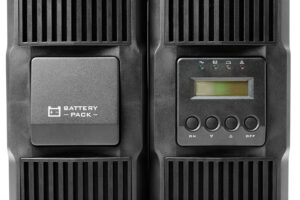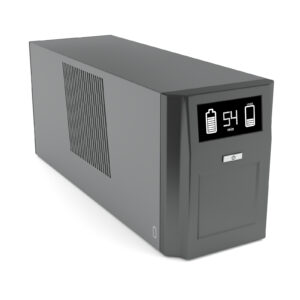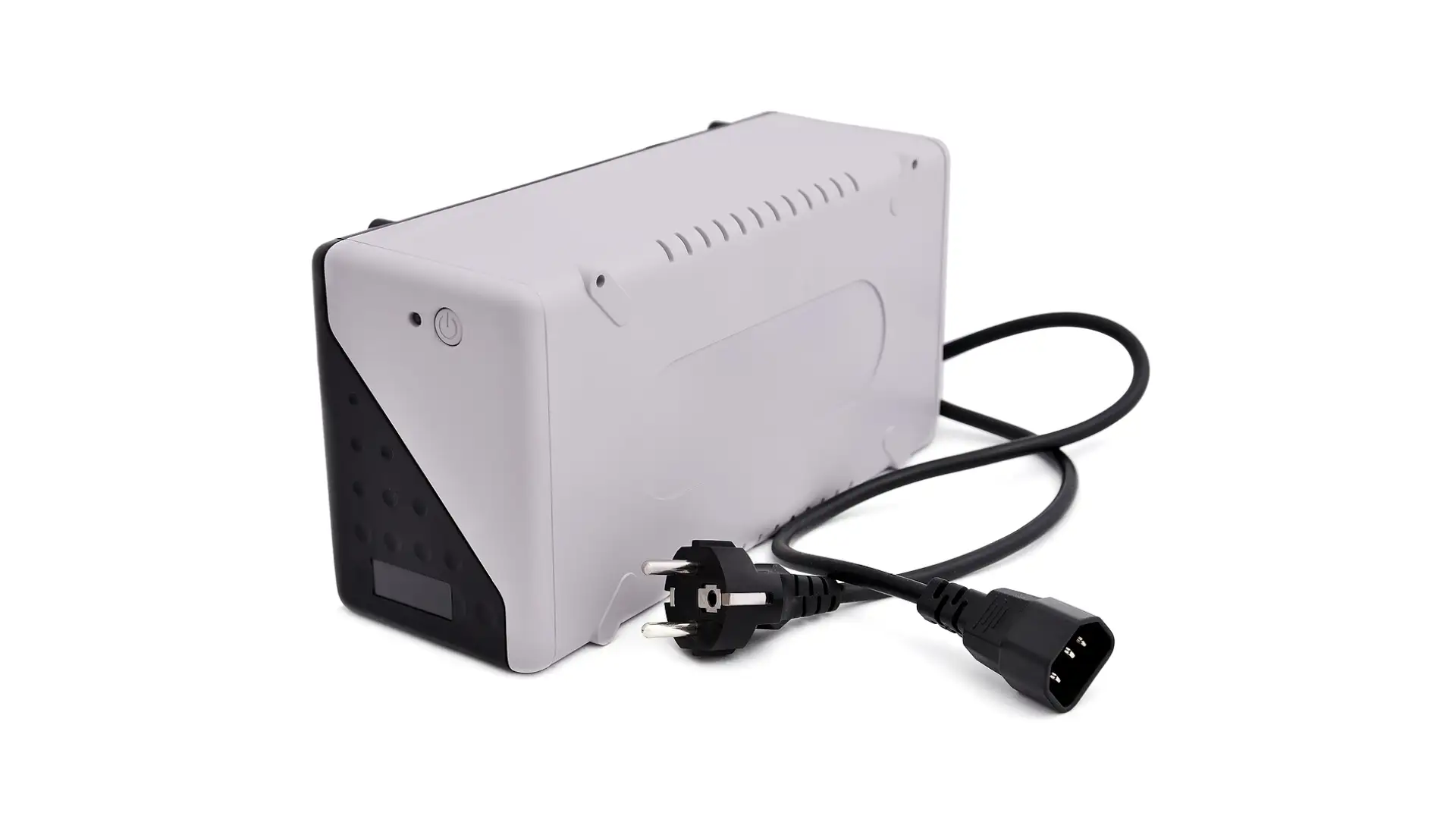
Which Uninterruptible Power Supply to Buy
I've realized just how crucial it is to have a reliable power source at home and work. The constant fear of power outages and voltage fluctuations can be a real headache, leading to data loss, damaged equipment, and disruptions in our daily routines. That's why I've been on a quest to find the perfect solution – an uninterruptible power supply (UPS).
But let me tell you, the sheer number of options available out there can be overwhelming. So, I decided to dive into the world of UPS systems, and in this guide, I'll share my journey and the factors I've discovered to consider when choosing the right UPS. Plus, I'll introduce you to the various types of UPS units and provide some recommendations to help you make an informed decision on which one is best for your needs.
Understanding the Importance of Uninterruptible Power Supply (UPS)
When it comes to ensuring a reliable power supply, especially in a world increasingly reliant on technology, the role of Uninterruptible Power Supply (UPS) systems cannot be overstated. In this section, we'll delve deeper into the significance of UPS systems, exploring what they are, why they are essential, and the financial implications of power outages.
What is a UPS?
At its core, an uninterruptible power supply (UPS) is an electrical device designed to provide power backup during situations like power outages or voltage fluctuations. Unlike standard surge protectors or power strips, a UPS goes a step further by offering a seamless transition to an alternative power source when the primary power supply is compromised. This transition occurs without interruption, ensuring a constant and reliable supply of electricity to connected devices.
UPS systems are available in various sizes and configurations, making them suitable for both home and business applications. The primary function of a UPS is to safeguard critical equipment and data from the adverse effects of power disturbances. Let's delve deeper into why having a UPS is crucial.
Why Do You Need a UPS?
- Continuous Operation: Power outages can be disruptive, causing computers, servers, and other electronic devices to shut down abruptly. A UPS acts as a safeguard by providing an immediate and uninterrupted power supply, allowing critical systems to continue running seamlessly. This ensures minimal downtime and prevents data loss.
- Protection from Voltage Fluctuations: Voltage fluctuations, both high and low, can harm electronic equipment over time. A UPS can stabilize voltage levels, protecting your devices from potential damage and extending their lifespan.
- Data Integrity: In business environments, data loss due to power interruptions can be catastrophic. A UPS not only prevents data corruption and loss but also offers enough runtime to save ongoing work and safely shut down systems.
- Cost Savings: While the upfront cost of a UPS may seem significant, it pales in comparison to the financial repercussions of a power outage. Businesses can incur substantial losses in terms of lost productivity, damaged equipment, and the resources required for data recovery.
Cost of Power Outages
Understanding the financial impact of power outages is crucial in making the case for investing in a UPS system:
- Lost Productivity: In a business setting, even a short power outage can lead to a significant loss of productivity. Employees are unable to work, and operations come to a halt until power is restored. This downtime translates into lost revenue.
- Damage to Equipment: Power surges that often accompany outages can damage sensitive electronic equipment. Repair or replacement costs can be substantial, especially for critical machinery or specialized devices.
- Data Recovery Expenses: Data loss can be costly in terms of both time and resources. Businesses may need to invest in data recovery services or allocate significant effort to recreate lost information.
- Reputation and Customer Trust: Prolonged outages can damage a business's reputation and erode customer trust. Unreliable services or delayed responses can result in customer dissatisfaction and lost clients.
- Legal Consequences: Depending on the industry, businesses may face legal consequences if they fail to meet uptime or data protection requirements.
Check out our post on Your Guide to Uninterruptible Power Supply
Types of UPS Systems
Uninterruptible Power Supply (UPS) systems play a crucial role in safeguarding electronic equipment from power interruptions and fluctuations. There are various types of UPS systems available, each offering different levels of protection. Let's explore three common types:
Standby (Offline) UPS
Standby UPS systems are the most basic option for power protection. They are designed to switch to battery power when the primary power source fails. While these UPS units are suitable for home use, they may not be the best choice for critical business applications due to the delay in switching to battery mode. In cases where a brief interruption in power is acceptable, standby UPS systems can be cost-effective solutions.
Line-Interactive UPS
Line-Interactive UPS systems provide a higher level of protection compared to standby models. They continuously monitor incoming voltage levels and adjust them as needed to regulate power. Additionally, they offer surge protection to shield connected devices from voltage spikes. Line-Interactive UPS units are well-suited for small businesses and home offices where consistent power quality is essential to prevent data loss and equipment damage.
Online (Double-Conversion) UPS
Online UPS systems represent the pinnacle of power protection. These UPS units operate by continuously converting incoming AC power to DC and then back to AC power. This double-conversion process ensures a clean and stable power supply, free from any voltage irregularities or disturbances. Online UPS systems are the ideal choice for environments where critical applications and sensitive equipment, such as data centers, servers, and medical devices, require uninterrupted power without any compromise on quality.

Determining Your Power Requirements
Selecting the ideal Uninterruptible Power Supply (UPS) for your needs involves a thorough understanding of your power requirements. In this section, we will explore the factors that influence your power needs, including wattage and VA rating, runtime considerations, and the importance of scalability.
Wattage and VA Rating
When it comes to UPS selection, one of the critical factors to consider is the wattage and VA (Volt-Ampere) rating of the devices you intend to connect to the UPS. This step is pivotal because it ensures that the UPS you choose can adequately support your equipment.
- Wattage: This is the measure of actual power consumed by your devices. It's crucial to add up the wattage of all the equipment you plan to connect to the UPS. This includes computers, monitors, servers, networking equipment, and any other electronics. Make sure to consider both the equipment's typical power consumption and its peak power usage during startup or heavy use.
- VA Rating: VA rating, on the other hand, represents the apparent power that a UPS can deliver. It is calculated by multiplying the voltage (V) by the current (A). While the VA rating should ideally match the wattage, it's essential to understand that some electronic devices, particularly those with power factor correction (PFC), may have a VA rating that exceeds the wattage.
To ensure compatibility and reliable performance, the UPS's capacity should either match or exceed the combined wattage and VA rating of your connected devices. Selecting a UPS with a higher capacity than your calculated requirement provides a safety margin and prevents overloading, which can damage the UPS and connected equipment.
Runtime Considerations
Determining how long you need your UPS to provide power during an outage is equally important. The required runtime depends on several factors:
- Criticality of Equipment: Identify which equipment is critical and needs to remain operational during a power outage. Servers, networking gear, and surveillance systems often fall into this category. Consider how long these devices must run to allow for a safe shutdown or for power to be restored.
- Battery Capacity: UPS systems are equipped with batteries that provide power during outages. The runtime of a UPS is directly related to the capacity of its batteries. Larger UPS units or those with external battery packs offer extended runtime options.
- Energy Efficiency: The energy efficiency of your UPS system can impact runtime. More efficient units may provide longer runtimes with the same battery capacity.
- Load Level: The total power load connected to the UPS influences runtime. If your connected devices consume more power, the runtime will be shorter.
By calculating the required runtime based on these considerations, you can select a UPS with an appropriate battery capacity. This ensures that your critical systems have enough time to operate during an outage, allowing for a smooth transition or safe shutdown.
Scalability
Lastly, consider the scalability of your chosen UPS system. Scalability refers to the UPS's ability to adapt to changing power needs. It's a crucial factor, especially if you anticipate future growth or increased power demands.
Scalable UPS systems allow for easy expansion of battery capacity or runtime as needed. This flexibility ensures that your UPS can continue to meet your requirements even as your power needs evolve. When investing in a UPS, think about your long-term plans and whether the UPS can accommodate changes without the need for a complete replacement.
Essential Features to Look for
When selecting the right uninterruptible power supply (UPS) for your needs, it's crucial to consider various essential features that can significantly impact its performance and usability. Let's delve deeper into these features to help you make an informed decision:
Automatic Voltage Regulation (AVR)
Automatic Voltage Regulation is a critical feature of UPS systems, especially in areas with unstable power grids. AVR technology actively corrects voltage fluctuations without resorting to battery power. This ensures a stable and reliable output voltage, preventing damage to sensitive electronic equipment and extending the lifespan of your UPS battery. By maintaining a consistent voltage level, AVR safeguards your connected devices from the adverse effects of under-voltage and over-voltage scenarios, which are common during power surges or fluctuations.
Surge Protection
Surge protection is another indispensable feature in a UPS. It acts as a frontline defense against sudden voltage spikes and transient surges that can wreak havoc on your electronics. These voltage anomalies can occur due to lightning strikes, electrical faults, or even the startup of large appliances within your premises. Without adequate surge protection, your devices are vulnerable to electrical damage or even complete destruction. A UPS equipped with surge protection helps to safeguard your valuable equipment by absorbing and diverting excess voltage safely, ensuring their continued functionality.
Battery Management
Battery management features are crucial for maintaining the health and performance of your UPS system. Look for a UPS that offers user-replaceable batteries. This feature simplifies battery replacement, allowing you to easily swap out old or depleted batteries without requiring professional assistance. Additionally, a UPS with a robust battery monitoring system is highly advantageous. Such a system provides real-time data on the condition of your UPS battery, including its capacity and overall health. It also sends alerts when the battery approaches the end of its lifespan or requires replacement. This proactive approach ensures that your UPS is always ready to provide reliable backup power when needed.
Network Connectivity
In today's interconnected world, remote monitoring and management have become essential features for UPS systems. UPS units equipped with network connectivity allow you to remotely monitor the status and performance of your UPS from any location with an internet connection. This capability is particularly beneficial for businesses and data centers where multiple UPS units are deployed across various locations. With network connectivity, you can receive real-time status updates, alerts, and notifications regarding the UPS's condition, battery health, and power events. This proactive monitoring empowers you to take timely action, such as initiating a graceful shutdown of servers during extended power outages or scheduling preventive maintenance.
User-Friendly Interface
A user-friendly interface can greatly enhance the usability of your UPS system. Whether it's a built-in LCD display or software interface, an intuitive and easy-to-navigate interface simplifies configuration, monitoring, and management tasks. With a user-friendly interface, you can effortlessly adjust settings, view important system information, and access logs and reports. This feature ensures that even non-technical users can effectively operate and manage the UPS without the need for specialized training.
Noise Level
While often overlooked, the noise level of your UPS can be a critical consideration, particularly in environments where silence is paramount. Some UPS units can generate audible noise when operating, which can be disruptive in quiet offices, home offices, or bedrooms. When selecting a UPS for such environments, look for models designed with noise reduction features. These may include quiet fans, advanced cooling systems, or even options to customize fan speed to minimize noise. Ensuring that your UPS operates quietly allows you to maintain a peaceful and productive environment without compromising on power protection.

UPS for Specific Applications
Selecting the right uninterruptible power supply (UPS) depends on your specific needs and the environment in which it will be deployed. Here's an in-depth look at the UPS options tailored for different applications:
Home Use
When considering a UPS for home use, it's essential to strike a balance between functionality and cost-effectiveness. Typically, a line-interactive UPS with sufficient outlets to protect your essential devices is suitable for most households. Line-interactive UPS units offer basic protection against power fluctuations and short outages, making them well-suited for residential use. They can safeguard your computers, entertainment systems, routers, and other critical appliances from potential damage or data loss caused by sudden power interruptions.
For added convenience, you may want to consider a small tower UPS. Tower UPS systems are compact and easy to integrate into your home office setup. They often feature a user-friendly interface and may offer extended runtime options to keep your devices powered during longer outages. This is particularly valuable if you work from home or have sensitive data that needs protection.
Small Business
Small businesses have distinct power protection requirements, often relying heavily on digital infrastructure for day-to-day operations. In such cases, an online UPS system is a robust choice. Online UPS units provide continuous power conditioning and protection, making them ideal for safeguarding sensitive electronics and critical data.
Scalability is a key consideration for small businesses with plans for growth. Ensure that the selected UPS system can accommodate additional loads or battery modules as your business expands. Additionally, network connectivity is crucial for remote monitoring and management of your UPS units, allowing you to proactively address issues and ensure uninterrupted operation.
Investing in online UPS systems for your small business not only protects your equipment from power disturbances but also provides the peace of mind needed to focus on business growth without concerns about downtime or data loss.
Data Centers
Data centers, as the nerve centers of modern businesses, demand the highest level of power protection and redundancy. In this environment, online UPS units are the standard choice due to their continuous double-conversion technology that guarantees a pristine and stable power supply.
High-capacity online UPS units are essential for data centers to support racks of servers, networking equipment, and storage systems. Redundancy is paramount to eliminate any single points of failure. Data centers often employ multiple UPS units in parallel, ensuring that if one fails, others seamlessly take over the load without interruption.
Advanced monitoring and management capabilities are vital for data centers. Remote access, real-time alerts, and detailed reporting are essential features to maintain uptime and swiftly address any issues. These UPS systems are designed for 24/7 operation and must meet strict reliability standards to ensure uninterrupted data processing and storage.
Medical Equipment
When it comes to critical medical equipment, reliability and patient safety are non-negotiable. Medical facilities require UPS systems that meet rigorous standards and certifications to ensure continuous power supply, protecting both sensitive equipment and patient data.
Online UPS systems with medical-grade certifications, such as UL 60601-1, are essential for medical applications. These certifications validate that the UPS meets stringent safety and performance requirements for medical environments. They provide a level of assurance that the UPS can withstand stringent testing and is safe to use with medical equipment.
In medical settings, data integrity is of utmost importance, especially in scenarios where patient records and monitoring systems rely on electronic equipment. Medical-grade UPS units ensure that critical devices remain operational during power disruptions, safeguarding patient care and maintaining the integrity of electronic health records.
UPS Maintenance and Testing
Maintaining and testing your uninterruptible power supply (UPS) is essential to ensure its continuous reliability and performance. Let's explore these maintenance and testing procedures in more detail:
Regular Inspection
Routine visual inspections are the first line of defense in ensuring your UPS remains in optimal condition. Here are some key aspects to consider during inspections:
- Physical Damage: Examine the UPS unit for any signs of physical damage, such as cracks, dents, or exposed wiring. Damaged components can compromise the UPS's ability to function correctly.
- Loose Connections: Check all connections, including power cords, data cables, and battery terminals, to ensure they are securely fastened. Loose connections can lead to power interruptions or even damage to the UPS.
- Dust Buildup: Clean the UPS as needed to prevent dust buildup. Dust accumulation can obstruct airflow, leading to overheating and reduced efficiency. Use compressed air or a soft brush to remove dust from vents and internal components.
By conducting regular inspections, you can identify and address issues promptly, preventing potential problems from escalating and ensuring the longevity of your UPS.
Battery Replacement
Batteries are a critical component of any UPS system, as they provide backup power during outages. Over time, UPS batteries can degrade and lose their ability to hold a charge. Therefore, following the manufacturer's recommendations for battery replacement intervals is crucial.
The recommended replacement interval may vary depending on factors such as battery type, usage patterns, and environmental conditions. Some UPS units feature user-replaceable batteries, allowing you to replace them without the need for professional service. When replacing batteries, make sure to use batteries of the same type and specifications recommended by the manufacturer. Proper battery maintenance is essential for ensuring that your UPS can deliver the expected runtime during power disruptions.
Testing Procedures
Regular testing of your UPS is essential to verify that it functions as expected when a power outage occurs. Testing procedures help identify any potential issues and ensure that your UPS is prepared to provide uninterrupted power backup. Here's how you can conduct UPS testing:
- Simulate Power Outages: Initiate controlled power outage simulations to verify that the UPS seamlessly transitions to battery power without disrupting connected devices. This process helps ensure that your UPS can adequately protect your equipment during actual outages.
- Runtime Assessment: During testing, monitor the runtime provided by the UPS. Compare the actual runtime to your expectations and adjust your power management strategies accordingly. This information helps you plan for longer outages and make informed decisions about which devices to prioritize for backup power.
- Load Testing: Test the UPS under load conditions to ensure it can handle the connected equipment's power requirements. It's essential to confirm that the UPS can support the devices it is intended to protect without overloading or overheating.
- Frequency of Testing: The frequency of testing depends on your specific needs and the criticality of the equipment protected by the UPS. Some businesses perform regular testing monthly or quarterly, while others may opt for semi-annual or annual testing. Consider your organization's tolerance for downtime and the importance of uninterrupted operation when determining the testing frequency.
- Settings Review: Periodically review and update your UPS settings as your power requirements change. Changes in your equipment setup or power needs may necessitate adjustments to the UPS configuration. Ensure that the UPS settings align with your current infrastructure and objectives.
Conclusion
continue reading
Related Posts
Uninterrupted Power Supply For Computer In today’s fast-paced and digitally […]
Uninterruptible Power Supply For TV In the digital age, our […]
Uninterruptable Power Supply Company In my daily life, both personally […]



